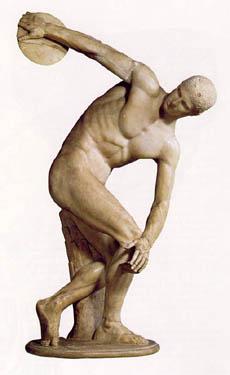Throughout this unit we have learned about different cultures and expressions of art. In ancient Egypt and Mesopotamia art was formed to show the gods and kings how much the common civilians worships them. Through the art you can see the different socioeconomic status’s of the common civilian. Such as the common civilian would seem to be smaller compared to the king/god. The statues that the common civilian would put out to take place for their worship would have extremely huge eyes which would make it seem like it is not a humane thing to have. In contrast artwork in Ancient Greece put an emphasis on humanism. Greek art is portrayed to capture the movements and realism of humans.
Unit 2 started off with a trip to the Brooklyn Museum has many collections that one can view. These collections consist of Soul of a Nation: Art in the Age of Black Power, Syria, Then and Now: Stories from Refugees a Century Apart, One: Do Ho Suh, Half the Picture: A Feminist Look at the Collection, Something to Say: Brooklyn Hi-Art! Machine, Deborah Kass, Kameelah Janan Rasheed, and Hank Willis Thomas, Cecilia Vicuña: Disappeared Quipu,Rob Wynne: FLOAT, Infinite Blue, The Brooklyn Della Robbia, Arts of Korea, American Art, A Woman’s Afterlife: Gender Transformation in Ancient Egypt, European Art,Ancient Egyptian Art, Assyrian Art, The Dinner Party by Judy Chicago, Decorative Arts and Period Rooms, Visible Storage ▪ Study Center, Life, Death, and Transformation in the Americas, Williamsburg Murals: A Rediscovery and Steinberg Family Sculpture Garden. The collection that piqued my interest the most is Arts of Korea.
The Pair of Boy Attendants, Korea Joseon Dynasty is an art piece that stood out to me. This art piece The Pair of Boy Attendants, Korea Joseon Dynasty has soft lines, bright colors, and is a three dimensional statue. The Pair of Boy Attendants, Korea Joseon Dynasty are usually called dongjas. These dongjas would be placed at buddist sculpture dieties to show that the donjgas are bringing gifts. While one of the boys is carrying a turtle the other boy is assumed to be carrying a tray of food. The colors primarily used in the sculptures are very light although if you look at the head and the feet they are a dark color. This contrasts with the white skin. The clothing on the statue is very detailed. When you look on the sleeve you can see the creases of the top, which makes it seem like that the shirt was a little too long or baggy. On the statue it’s very hard to see the turtle. It seems to blend in with the boys top. While the other boys tray does not blend in with his top that significantly it is the same color as the boys top. Both of the boys have very straight lines on their hands where you can see their fingers. The two boys have very faint curved eyebrow lines and ruby red lips which contrasts against their pale skin.
We then continued the unit with humanism in Greek and Roman art. Humanism is an ideology that believes values and needs are more important then religious beliefs. Humans are suppose to ignore their needs and desires and work on creating their own set of ethics. Humanism emphasized on what the human was capable of. Humanism in Greek and Roman art were portrayed through creating a central focus on human art. Throughout Greek and Roman art work the ideologies of the Renaissance were portrayed in every aspect. The Renaissance was a period where there was emphasize on classical learning, human potential , and achievements. When looking at Greek and Roman art they seem to be stuck in a moment. This means that there is so much detail in the art of the Greek and Roman that it seems like they or on pause and you can figure out exactly what their purpose is and motive is. Greek and Roman art was usually portrayed in nudity which showed the confidence they had with their bodies. In contrast, humanism in Mesopotamian art and Egyptian art were used for the worship of kings and gods. Although they would have human like features their would be emphasis on the bulging eyes to let the kings and gods know that how devoted they were to them. Their art work was usually covered in clothing and loins to glorify their modesty, since nudity was frowned upon. While art in Ancient Greek and Rome was used to glorify the athleticism and sports whereas in Mesopotamian art and Egyptian art were used to devote their attention to religion.
Anubis an art piece that I very much enjoyed is from Egyptian art that has a head of of a jackal and the body of a man and is the god of the dead. Anubis weighs your heart to a feather. This is to see if your sins weigh more or less than a feather. The whole aspect of sinning comes from religion. That we please god by NOT sinning. Mesopotamian and Egyptian Art also show the hierarchy and the social status with the pharaoh shown to be the biggest and on the top while accompanied by his followers who are of similar or smaller size and the slaves which are the smallest and the lowest.
Through this summary we learned about the different cultures and how they portray their art. Either through the mixture of animal like features or the captivity of the human body.


